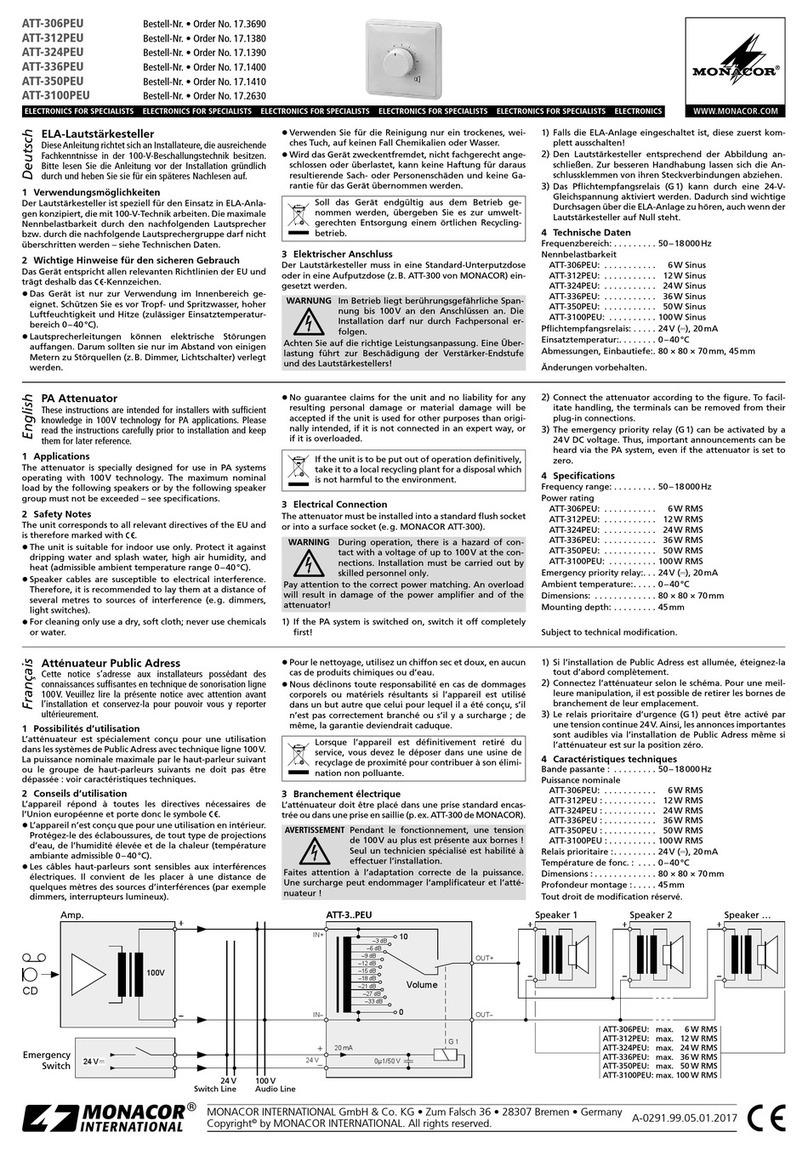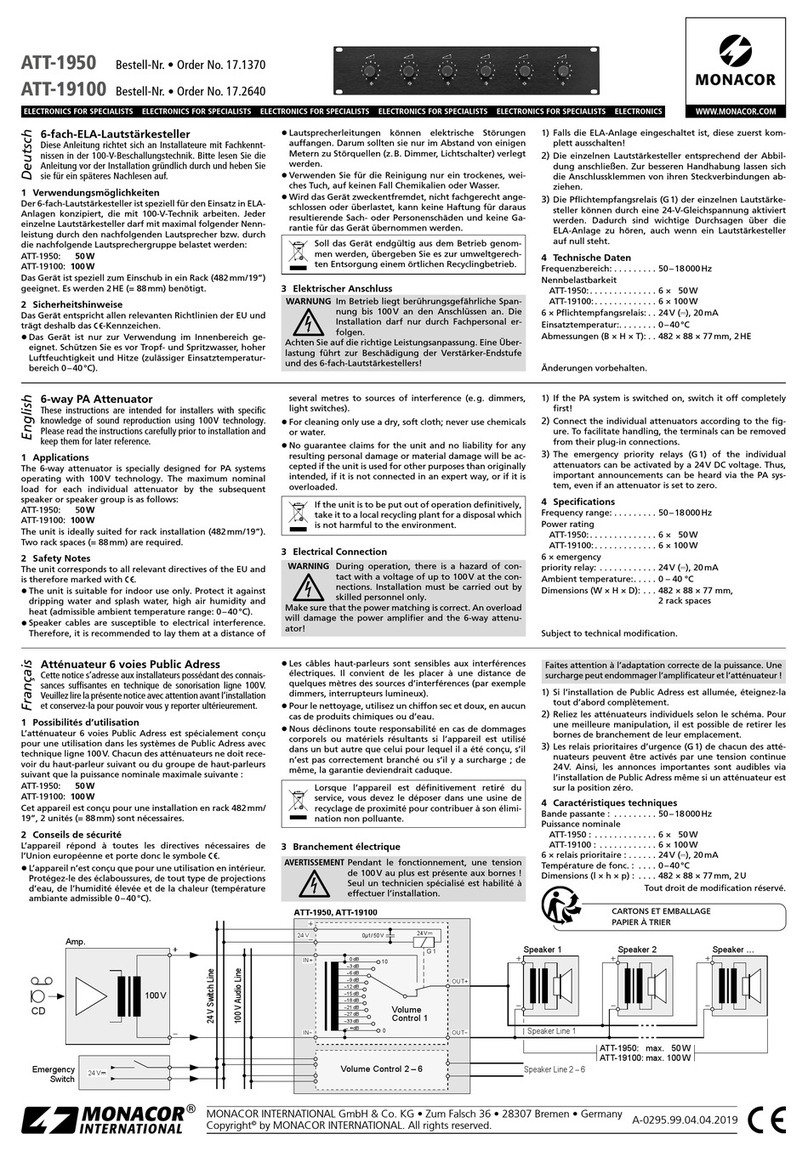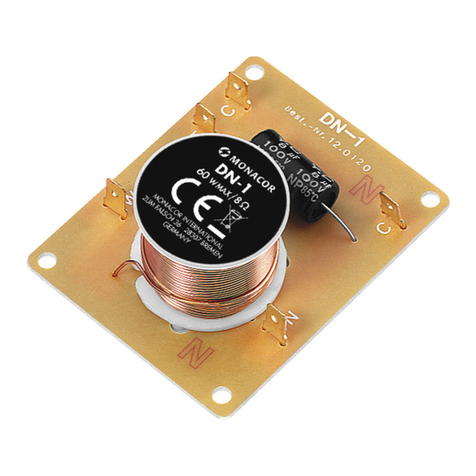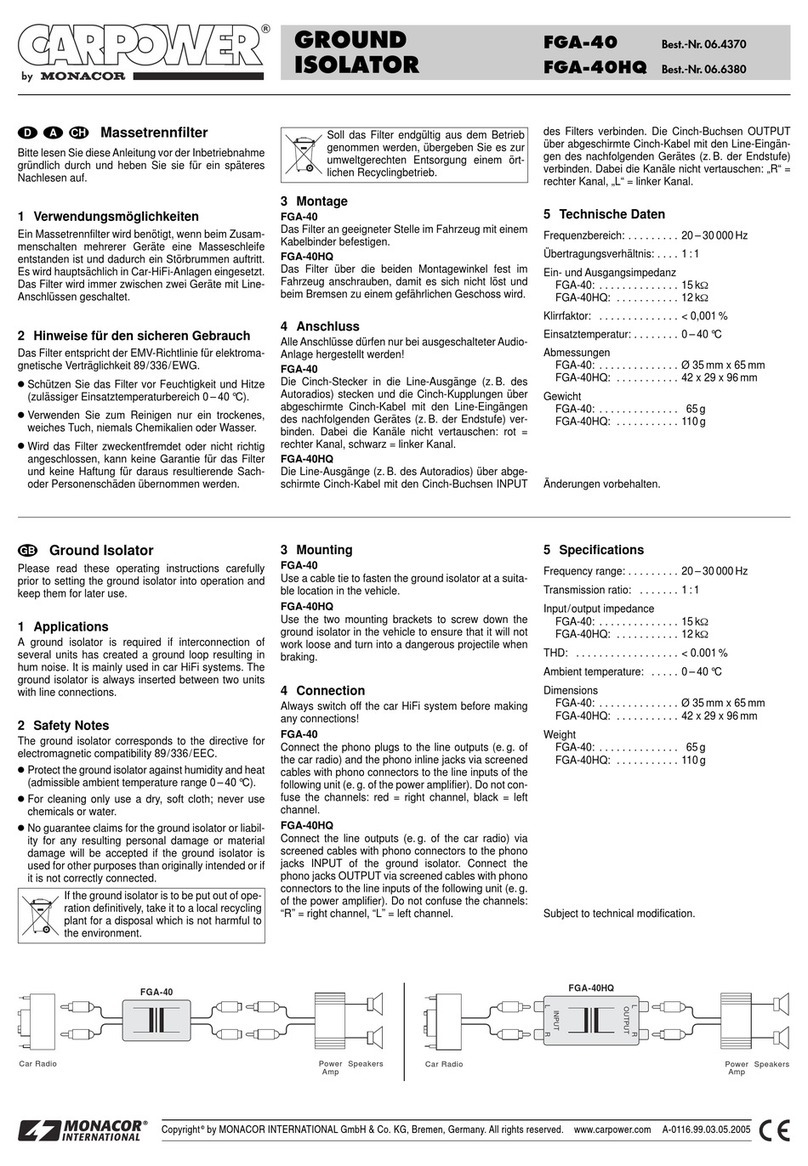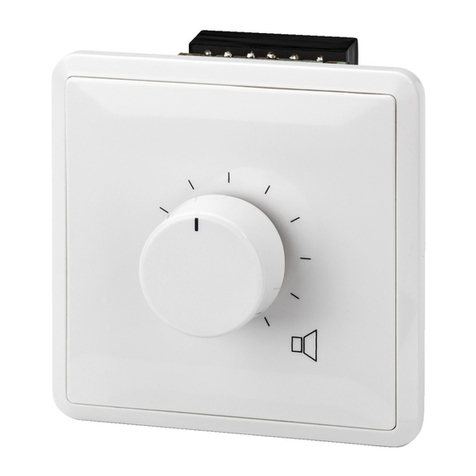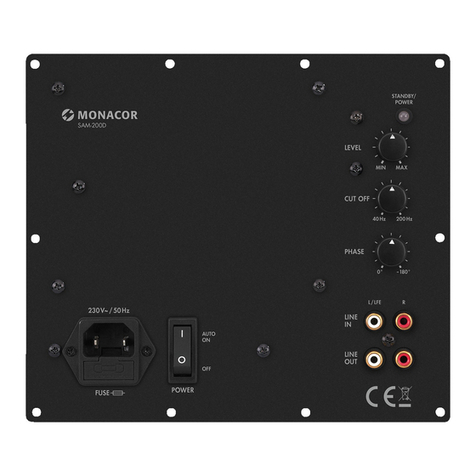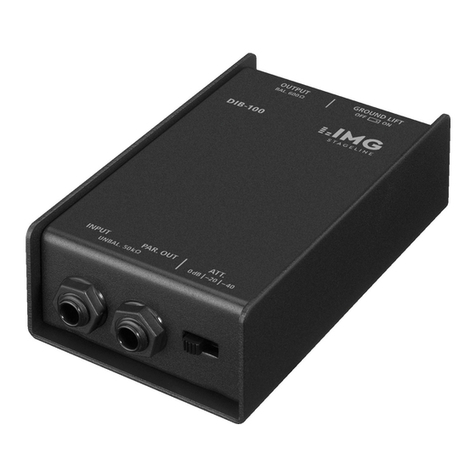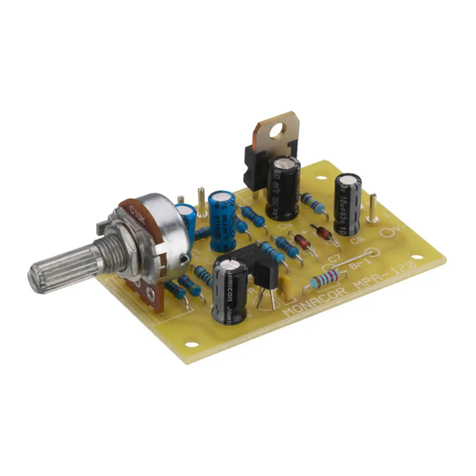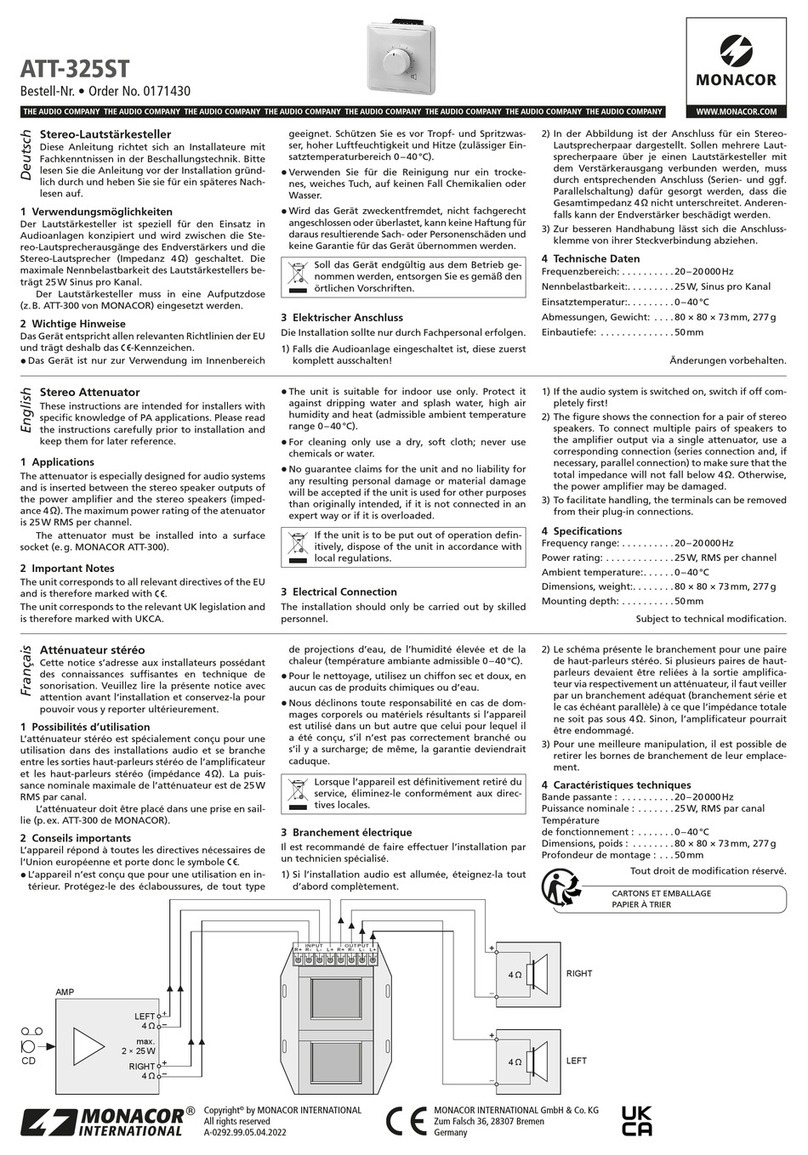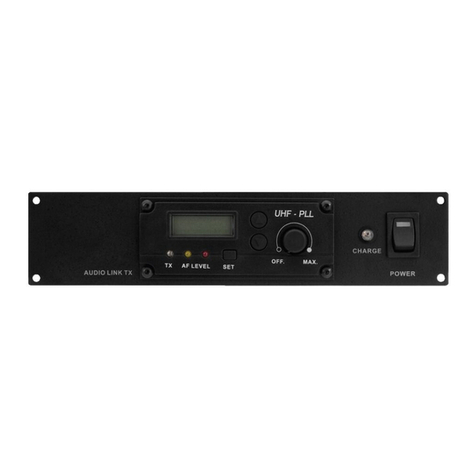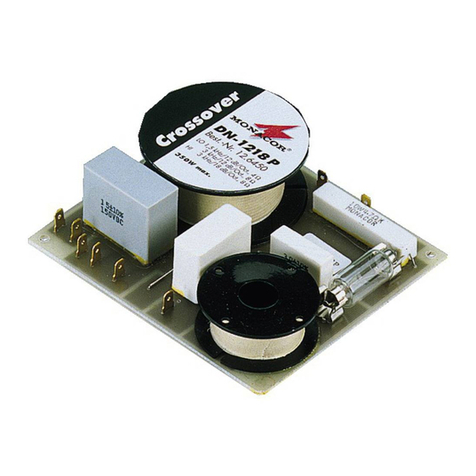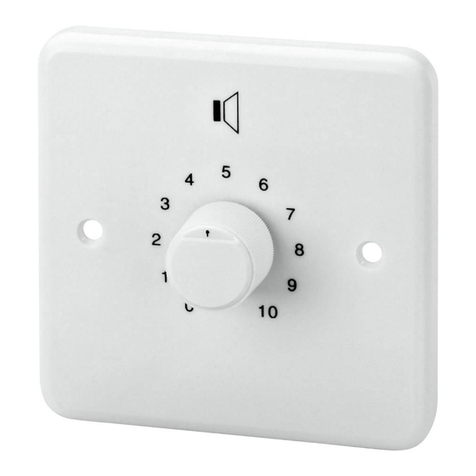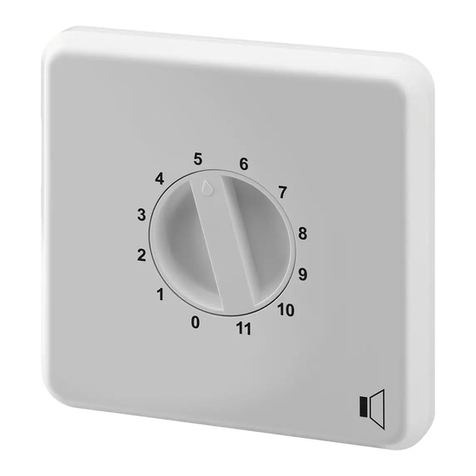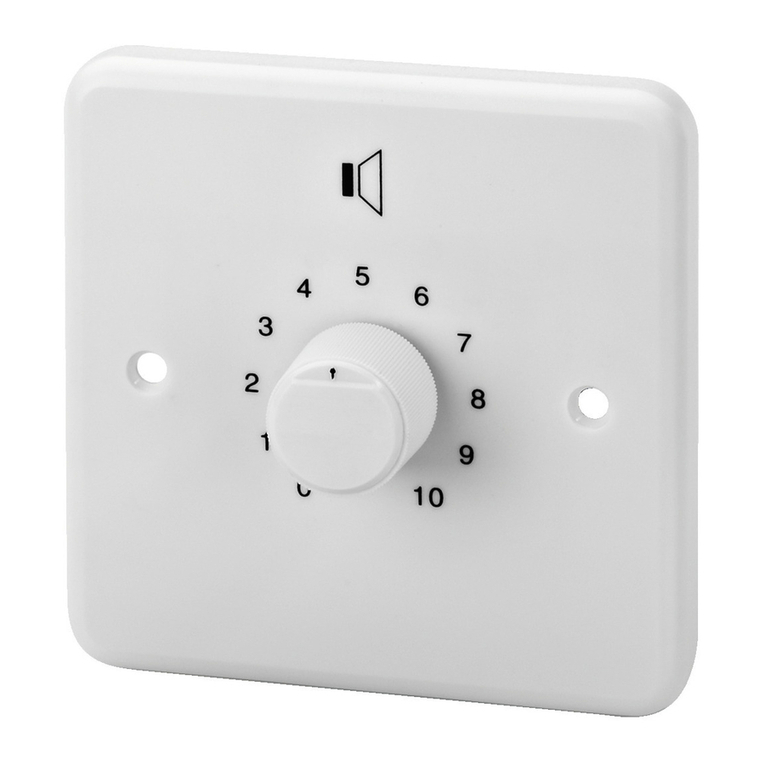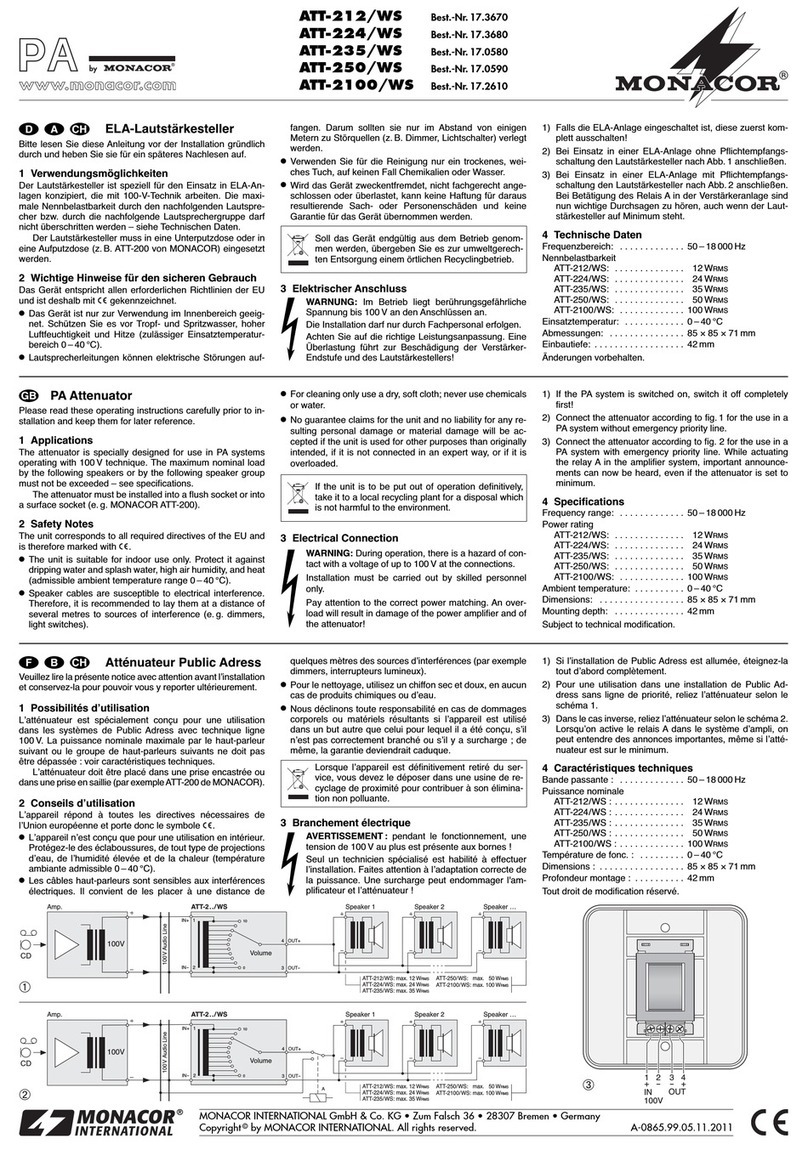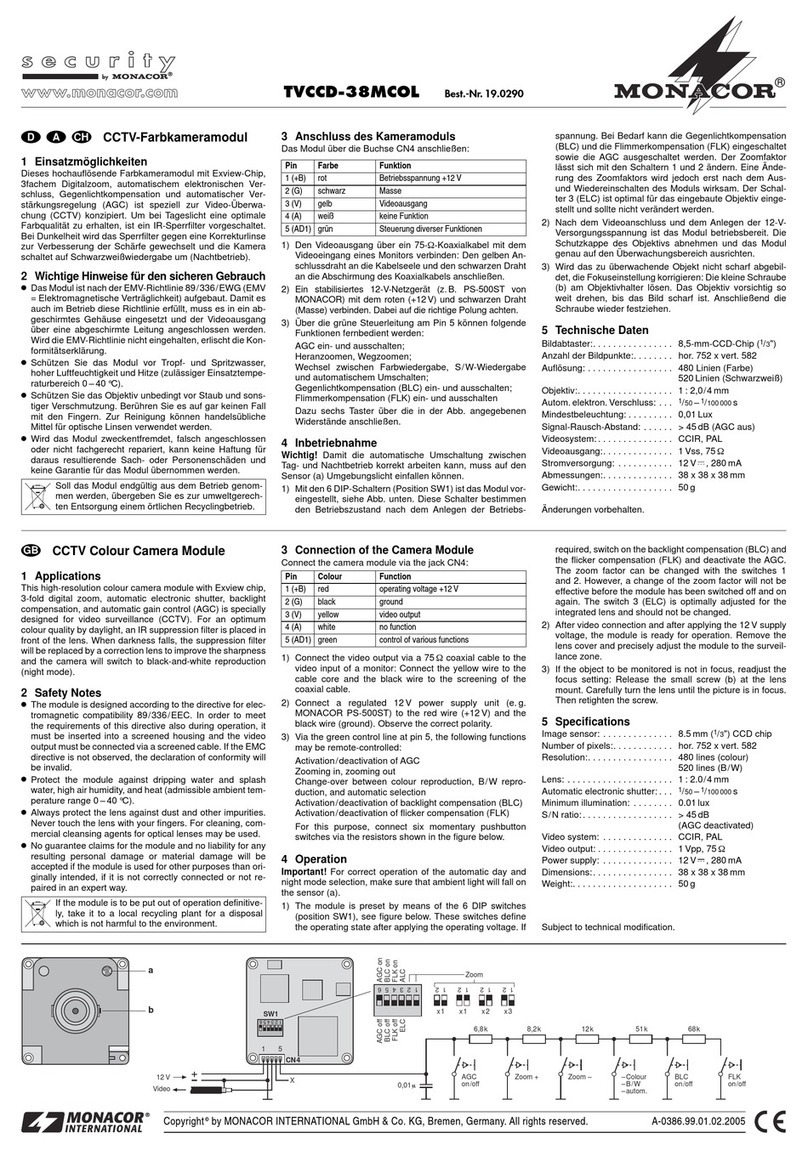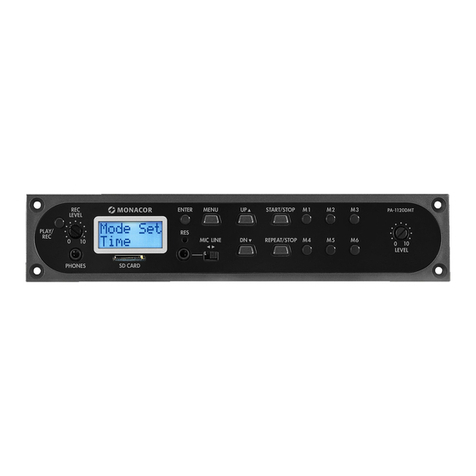Módulo receptor para
863,05 MHz o 864,80 MHz
Por favor, lea estas instrucciones cuidadosamen-
te antes de poner el aparato en funcionamiento y
guárdelas para su uso posterior.
1 Aplicaciones
Este módulo receptor sirve para la instalación
posterior, por ejemplo, en un amplificador, un sis-
tema activo de altavoz, o un mezclador. Recibe
las señales de un micrófono sin cable de la serie
TXS-82... de “img Stage Line”.
Para el funcionamiento se requiere una
corriente directa de 8 V. Es posible conectar un
instrumento de intensidad de campo, un LED para
indicar una señal de portadora recibida, y un con-
trol del silenciador.
2 Consejos de seguridad importantes
GEl módulo ha sido instalado de acuerdo con la
Directiva 2004/108/CE para la compatibilidad
electromagnética. Para cumplir con esta Direc-
tiva también durante el funcionamiento, debe
ser colocado en una caja blindada y la salida
audio se debe conectar a través del cable blin-
dado. Si la Directiva para la compatibilidad
electromagnética no se respeta, la declaración
de conformidad expirará.
GProteja el módulo de cualquier tipo de proyec-
ciones de agua, salpicaduras, humedad ele-
vada, y calor (temperatura de utilización admi-
sible 0 – 40 °C).
GNo se admitirá ninguna exigencia de garantía
para el módulo y ni se asumirá ninguna respon-
sabilidad en caso de daños personales o mate-
riales si el módulo es utilizado para otro fin dis-
tinto a aquél para el que fue concebido, si no es
correctamente conectado o si no es reparado
por personal habilitado de manera adecuada.
3 Conexión y puesta en marcha
1) Conecte el módulo a través del jack de 6 polos
(4) como muestra la imagen 1:
2) Para ajustar el umbral del silenciador a través
de un potenciómetro independiente, conecte
Si el módulo va a ser retirado definitiva-
mente del uso, llévelo a un centro de reci-
claje próximo para su eliminación no con-
taminante.
los tres componentes dentro de las líneas dis-
continuas según la imagen 1 y ponga el inte-
rruptor DIP SQ (2) en la posición ON.
¡Para ajustar el umbral del silenciador con el
potenciómetro interno (3), los tres componen-
tes dentro de las líneas discontinuas no deben
estar conectados! Ponga el interruptor DIP SQ
en la posición “apagado”.
3) Conecte al jack (1) una antena con la frecuen-
cia de recepción que corresponda.
4) Para suprimir ruido de conmutación, ponga el
interruptor DIP TONE (2) en la posición ON.
5) Para ajustar el umbral del silenciador, conecte
un transmisor adecuado. Ajuste el potenció-
metro del silenciador externo (P1) o el poten-
ciómetro interno (3) de modo que el LED
conectado (LD1) se encienda.
4 Características técnicas
Frecuencia de recepción
TXS-820M: . . . . . . . . . 863,05 MHz
TXS-822M: . . . . . . . . . 864,80 MHz
Sistema receptor: . . . . . . non-diversity
Salida audio: . . . . . . . . . máx. 1,5 V
Voltaje de func.: . . . . . . . 8 V , 90 mA
Dimensiones: . . . . . . . . . 120 × 15 × 57 mm
Sujeto a modificaciones técnicas.
Moduł odbiorczy
863,05 MHz lub 864,80 MHz
Prosimy o uważne przeczytanie poniższej instru-
kcji przed użyciem urządzenia, oraz o zachowanie
tekstu do wglądu.
1 Zastosowanie
Moduł odbiorczy jest przeznaczony do podłą-
czenia np. do wzmacniacza, aktywnego zestawu
głośnikowego, lub do miksera. Urządzenie służy
do odbioru sygnału dźwiękowego z mikrofonu
bezprzewodowego serii TXS-82... z oferty “img
Stage Line”.
Urządzenie jest zasilane napięciem bezpośre-
dnim 8 V. Do urządzenia można podłączyć mier-
nik natężenia pola, wskaźnik LED sygnalizujący
otrzymanie sygnału nośnego, oraz regulator wyci-
szania.
2 Bezpieczeństwo użytkowania
GUrządzenie spełnia wymogi normy o zgodności
elektromagnetycznej 2004/108/WE. Aby urzą-
dzenie nadal spełniało powyższe wymogi pod-
czas pracy, należy je zamontować w ekranowa-
nej obudowie, oraz należy podłączyć wyjście
audio ekranowanym kablem. Jeśli urządzenie
nie będzie spełniało wymogów normy o zgodno-
ści elektromagnetycznej, oświadczenie o zgod-
ności z ową normą przestanie obowiązywać.
G
Należy chronić urządzenie przed działaniem
wody, wilgoci oraz wysokiej temperatury (dopusz-
czalna temperatura otoczenia pracy to 0 – 40 ºC).
GProducent ani dostawca nie ponoszą odpowie-
dzialności za wynikłe szkody (uszkodzenie
sprzętu lub obrażenia użytkownika), jeśli urzą-
dzenie było używane niezgodnie z przezna-
czeniem, jeśli zostało nieodpowiednio podłą-
czone, lub jeśli było poddawane nieautoryzo-
wanym naprawom.
3 Podłączenie urządzenia, przygotowanie
do pracy
1) Należy połączyć moduł przez gniazdo 6-pino-
we (4), zob. rys. 1:
2) Aby regulować próg wyciszania za pomocą
zewnętrznego potencjometru, należy połączyć
Jeśli urządzenie ma zostać ostatecznie
wycofane z użycia, należy przekazać je
do punktu utylizacji odpadów, aby unik-
nąć zanieczyszczenia środowiska.
3 komponenty zaznaczone linią przerywaną na
rys. 1 i ustawić mikroprzełącznik SQ (2) w
pozycji ON.
Aby regulować próg wyciszania za pomocą
wbudowanego potencjometru (3), nie wolno
podłączać trzech komponentów zaznaczonych
linią przerywaną! Mikroprzełącznik SQ ma się
znajdować w pozycji “off”.
3) Należy podłączyć do gniazda (1) antenę o
odpowiedniej częstotliwości odbiorczej.
4) Należy ustawić mikroprzełącznik TONE (2) w
pozycji ON, aby wyciszyć trzaski podczas włą-
czania i wyłączania urządzenia.
5) Aby ustawić próg wyciszania, należy włączyć
nadajnik. Należy ustawić zewnętrzny potencjo-
metr do regulacji progu wyciszania (P1) lub
wbudowany potencjometr (3), aż zapali się
podłączony wskaźnik LED (LD1).
4 Dane techniczne
Częstotliwość odbiorcza
TXS-820M: . . . . . . . . . 863,05 MHz
TXS-822M: . . . . . . . . . 864,80 MHz
System odbiorczy: . . . . . non-diversity
Wyjście audio: . . . . . . . . maks. 1,5 V
Napięcie robocze: . . . . . . 8 V , 90 mA
Wymiary: . . . . . . . . . . . . 120 × 15 × 57 mm
Z zastrzeżeniem możliwości zmian.
TXS-820M
Best.-Nr. 24.4470
www.imgstageline.com
TXS-822M
Best.-Nr. 24.4480
